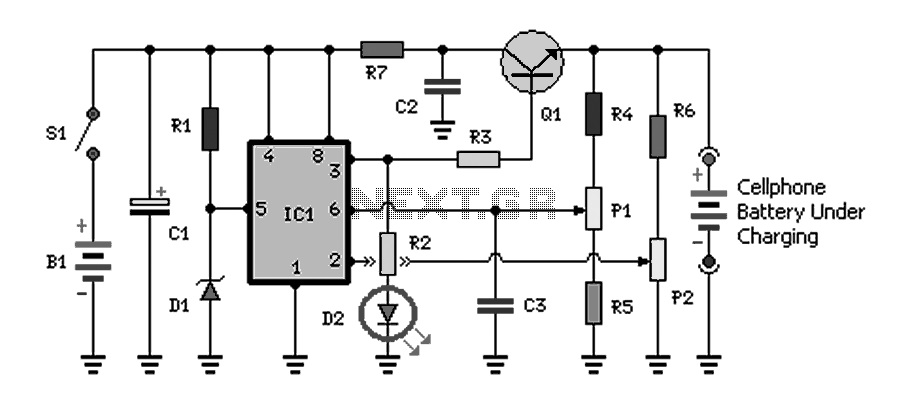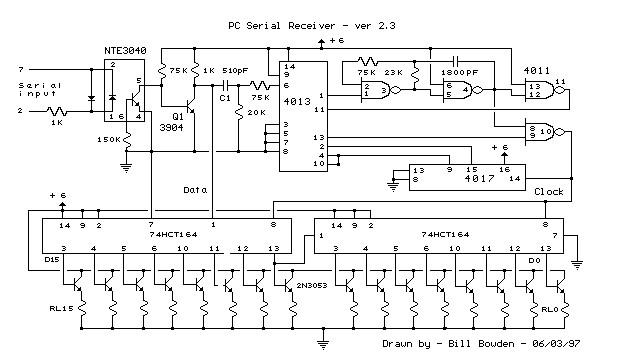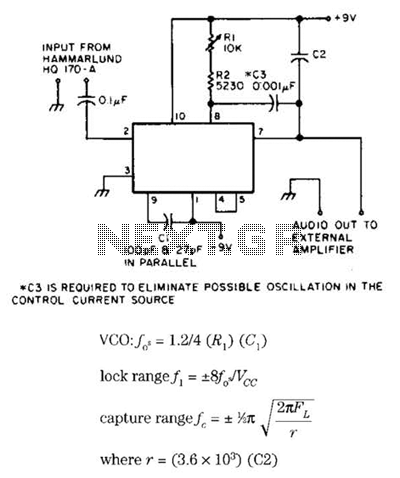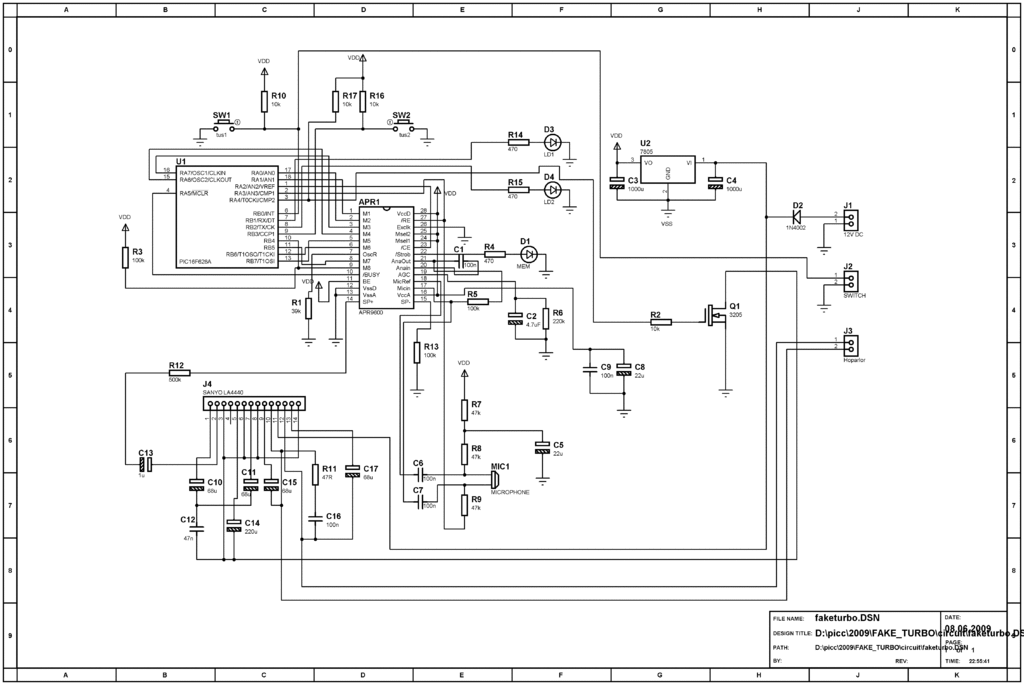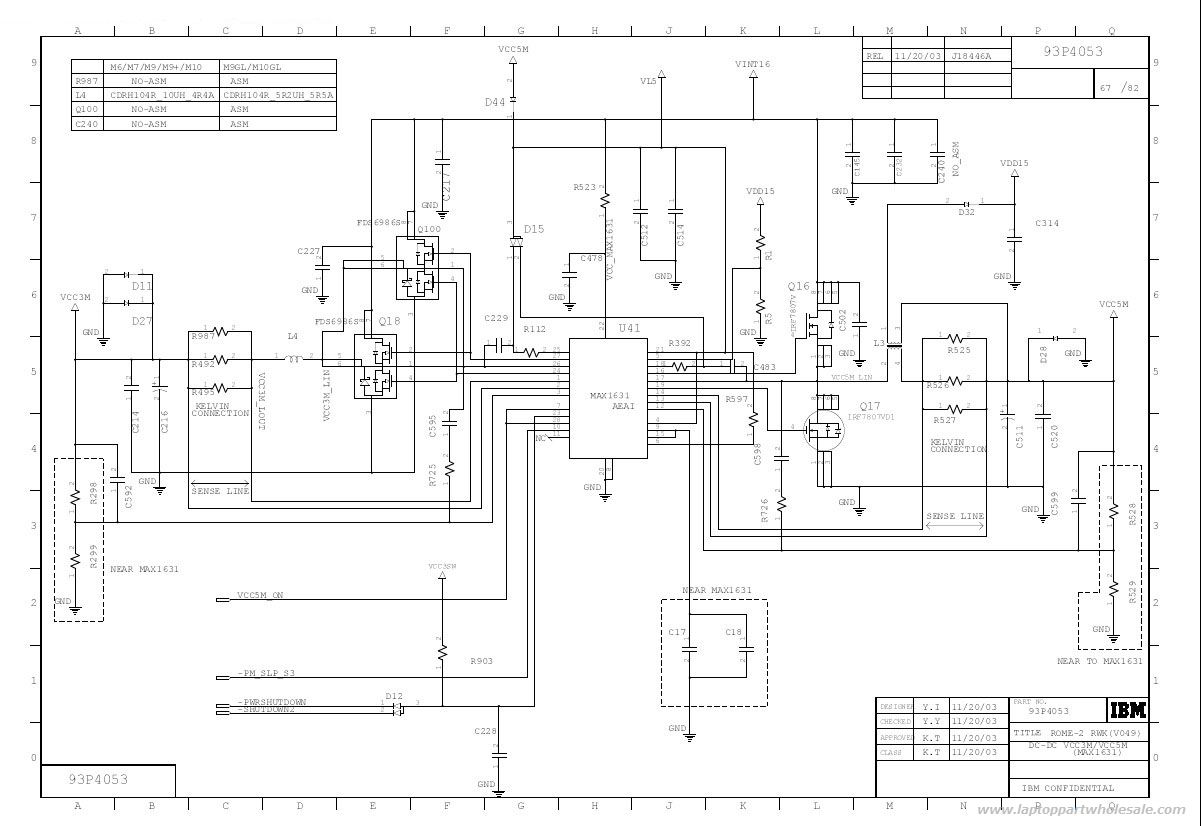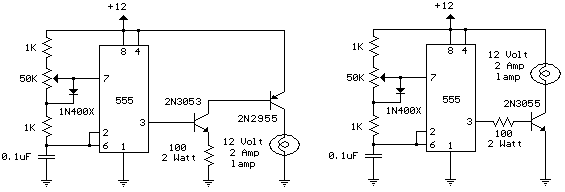
8-Channel A/D Converter For Pc Clones Circuit
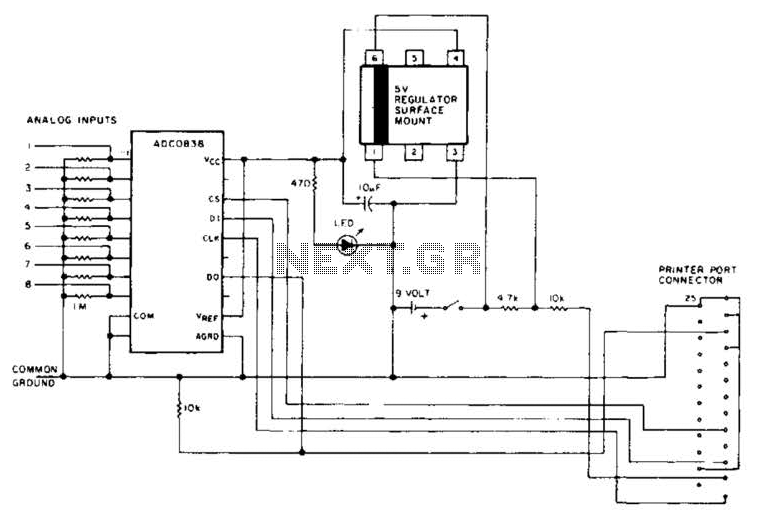
An A/D converter by National Semiconductor (ADC0838) converts 0 to 5 V analog inputs into a digital data format. A 9 V battery is utilized. The converter connects to the pointer port connector through a 25-pin connector.
The ADC0838 is a versatile analog-to-digital converter (ADC) designed to handle a range of analog input voltages from 0 to 5 volts, making it suitable for various applications in signal processing and data acquisition systems. The device operates with a single supply voltage of 9 volts, which is used to power the internal circuitry of the converter.
The ADC0838 features a 25-pin dual in-line package (DIP) configuration, facilitating easy integration into existing systems. The 25-pin connector serves as the interface between the ADC and the pointer port, allowing for seamless communication between the ADC and the host microcontroller or computer system. The pin configuration includes power supply pins, ground connections, analog input pins, and digital output pins, which are essential for the proper functioning of the device.
The converter employs a successive approximation method for digitizing the analog input signal, resulting in an efficient and accurate representation of the analog voltage in binary form. The output of the ADC can be interfaced with various digital systems, enabling further processing or display of the converted data.
In summary, the ADC0838 is a reliable and efficient component for converting analog signals to digital data, suitable for a variety of applications requiring precision and reliability in data acquisition. The use of a 9 V battery to power the device ensures that it operates effectively within its specified voltage range, while the 25-pin connector allows for straightforward integration into broader electronic systems. An A/D converter by National Semiconductor (ADC0838), converts 0- to 5-V analog inputs to a digital data format. A 9-V battery is used. The converter connects to the pointer port connector via a 25-pin connector.
The ADC0838 is a versatile analog-to-digital converter (ADC) designed to handle a range of analog input voltages from 0 to 5 volts, making it suitable for various applications in signal processing and data acquisition systems. The device operates with a single supply voltage of 9 volts, which is used to power the internal circuitry of the converter.
The ADC0838 features a 25-pin dual in-line package (DIP) configuration, facilitating easy integration into existing systems. The 25-pin connector serves as the interface between the ADC and the pointer port, allowing for seamless communication between the ADC and the host microcontroller or computer system. The pin configuration includes power supply pins, ground connections, analog input pins, and digital output pins, which are essential for the proper functioning of the device.
The converter employs a successive approximation method for digitizing the analog input signal, resulting in an efficient and accurate representation of the analog voltage in binary form. The output of the ADC can be interfaced with various digital systems, enabling further processing or display of the converted data.
In summary, the ADC0838 is a reliable and efficient component for converting analog signals to digital data, suitable for a variety of applications requiring precision and reliability in data acquisition. The use of a 9 V battery to power the device ensures that it operates effectively within its specified voltage range, while the 25-pin connector allows for straightforward integration into broader electronic systems. An A/D converter by National Semiconductor (ADC0838), converts 0- to 5-V analog inputs to a digital data format. A 9-V battery is used. The converter connects to the pointer port connector via a 25-pin connector.
